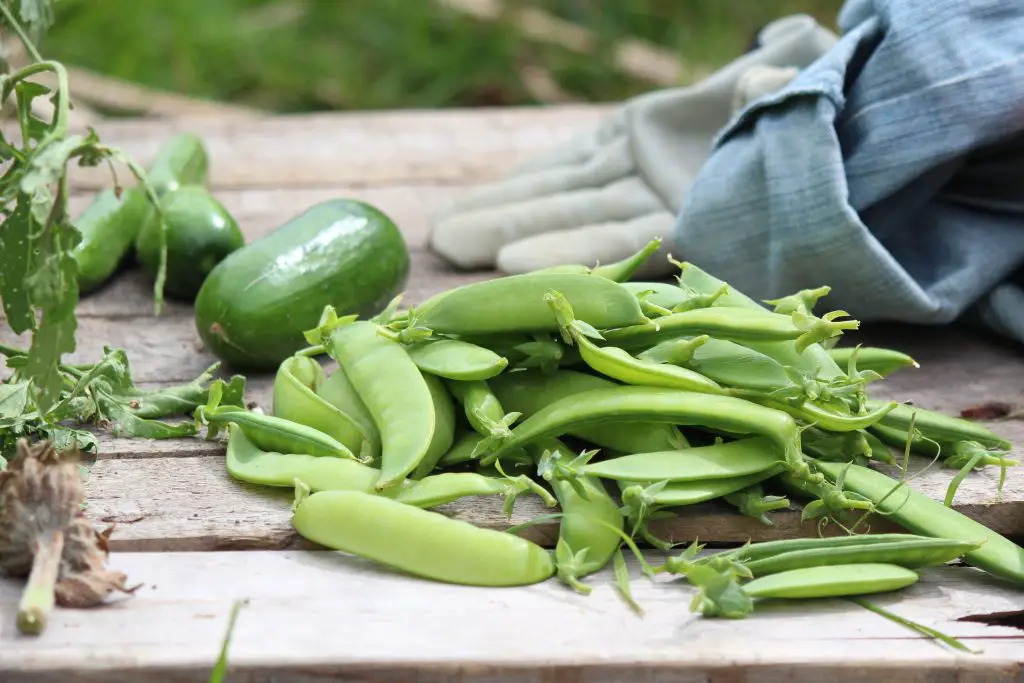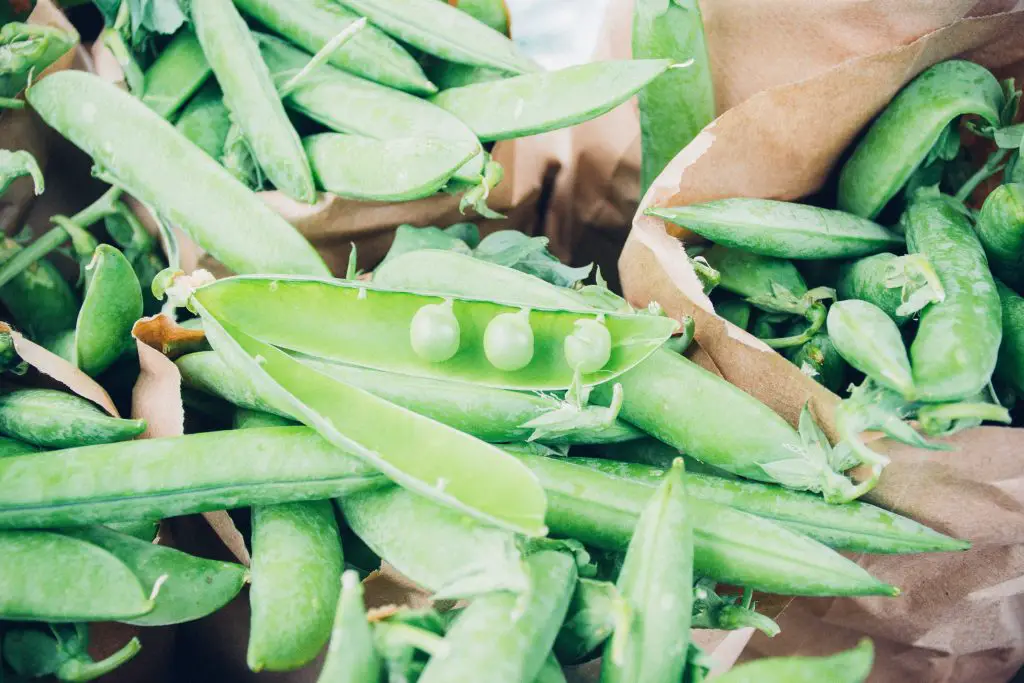Can You Eat Peas Raw Straight From The Plant? When most people think of peas the first thing that comes to mind is frozen peas from the grocery store. These peas are almost always cooked either by boiling or frying, however, is it possible to eat them raw directly from the plant?
Peas, whether they are green peas or snow peas, can be eaten raw directly from the plant. The favor that you will get from peas eaten directly from the pod is significantly different due to the increased sugar levels present. These sugars decline over time as the peas age and take on an increasingly starchy flavor.
This characteristic difference in sweetness can also be detected in snow peas which are also significantly crunchier than the snow peas available from the grocery store. This is largely because the snow peas are most likely to be around a week or two old. However, the extent of this difference is reduced as the degree of cooking is increased.

Which Is The Best Type Of Pea To Grow
Peas in any form are well worth growing at home simply for the taste and they rank highly among those fruit and vegetable that show the greatest difference in flavor compared to their store brought counterparts. Other crops that are significantly different include strawberries, apricots, corn, and plums.
However, I tend to favor growing snow peas in my own garden over other peas for one simple reason, time. Podded peas are absolutely delicious but extremely time-consuming due to the need to shell the peas. In the past when I have grown peas it has taken me several hours to shell all the peas.
As a result of my limited time, I have opted to spend my time growing crops that are equally flavorsome and provide a greater volume of food with less effort.
How To Grow And Maximize The Availability Of Fresh Peas
Whether you chose to grow snow peas or podded peas there is a limited time throughout the year where the plant is producing. However, there are several things that you can do to maximize the period over which the peas are available in your garden.
Peas are a cool-weather crop that need to be grown in the cooler months of the year, which usually means in spring or Autumn. However, in regions with relatively mild winters or summers, the growth period can be extended. As a general rule temperatures need to remain between 41 to 68°F (5 to 20°C) to grow the plant successfully.
I personally live in zone 10 which allows me to have the plants growing through the winter though the cooler temperature in mid-winter does prevent there from being much fruit production until latter part of winter.
To optimize the time that plants are available I personally do 3 sowings in a calendar year. I usually sow seeds in late winter or early spring, then also in mid to late summer, and then again in early autumn. The early Autumn sowing is designed to enable the plant to reach a reasonable size prior to the weather cooling down.

This allows the plant to sit throughout the winter until the weather starts to warm up in early spring which produces an early crop. This technique can be used in any regions where the temperatures remain above 28°F (-2°C), at these temperatures the plants will be unaffected by the cold.
If temperatures are between 20 and 28°F (-2 to -6°C) peas will survive but may suffer some damage. These effects can largely be eliminated by adding some frost protection in the form of a blanket or row cover. If you need a row cover the product we recommend is the Growsun Garden Tunnel Plant Cover because it is relatively tall and has hoops that can be anchored deeply into the ground which allows it to resist wind. The product is shown in the image below.

However, if you live in a region where the winter temperature is relatively cold the best way to get an early crop in spring is to sow seeds indoors to get an early start. To ensure that the seeds germinate it is best to place a seed tray in a warm location or alternatively, it is a good idea to use a heated propagation tray.
Heated propagation trays are ideal as they make it easy to maintain a constant temperature and humidity for the seedlings. The one we recommend is the iPower Heating Seed Starter Germination Kit, shown in the picture below largely because it has a vented humidity dome and is relatively inexpensive. Click on the link to see the current price on Amazon.

How To Plant Peas
Peas generally are relatively easy to grow and germinate quickly in 7 to 10 days. Seeds can be planted directly into soil outside or into seed trays if the weather is too cold. When planting outside the easiest way to plant is to make a long furrow that is an inch or two deep. Sprinkle the seeds into the furrow at a spacing of approximately an inch apart and cover the seeds over.
If you are planting into a seed tray I generally recommend putting two seeds per cell at a depth of around an inch. The seedlings will usually only need to spend approximately 4 weeks in the seed tray before they can be planted out.
While it is traditionally to purchase seeds from a garden supplier it is also possible to plant dried peas from the supermarket. To read more about this click here.
In terms of soil conditions, peas should ideally be planted in a warm sunny location that gets at least 6 to 8 hrs of sun a day. The soil should be rich, moist, and free draining.
Once the seeds are planted it will also be necessary to put a support system in place. It is traditional for gardeners to use lattice for this purpose however I have found that string by itself is equally effective and less work.
To use string start by hammering in garden stakes around 3 ft apart in line where you have planted the seeds. Run a string line between that is 4 inches above the ground between the stakes. When doing this wound the string around the stake to create two parallel lines on either side of the stake and ensure that the plant is growing up in between the two lines of string. This will help to support the plant as it grows.
As the plant increases in height add a new layer of string around 4 inches above the previous one and ensure that the plant continues to grow through the string. Continue this process throughout the season until the plant reaches its full height.
Once the plant begins to flower you will need to start to keep a close eye on the pods as they appear and pick them every couple of days. For podded peas it is best to pick the pods when they are slightly thicker than a pencil. For snow peas it is best to aim for a pod that is approximately 4 inches long.
